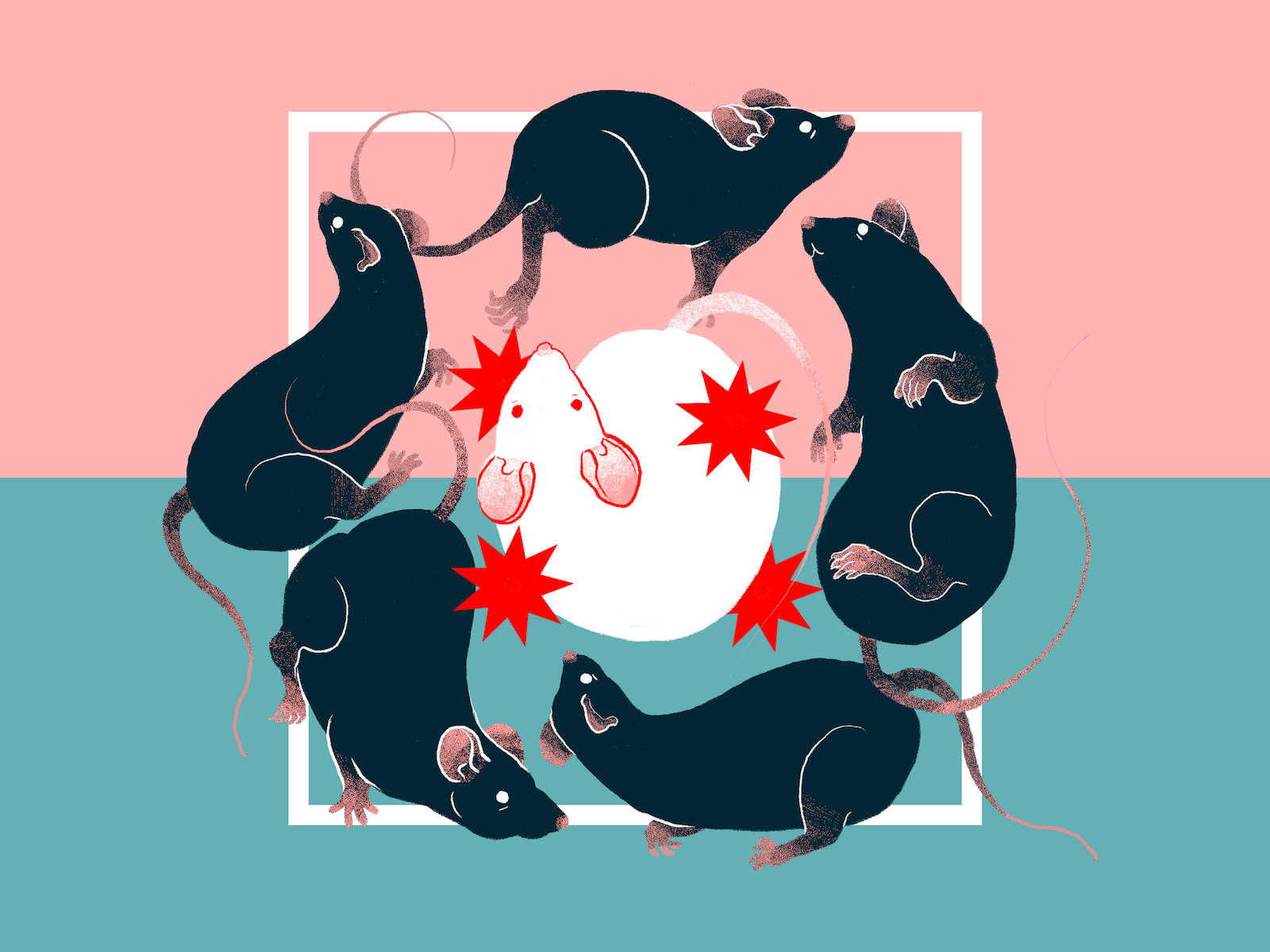It is a well established fact that men and women experience chronic pain differently. By the late 1990’s, the findings of various review studies on pain research were clear: Women are more likely than men to experience a variety of recurrent types of pain. It remains troubling, however, that most studies conducted on pain processing since this discovery have been carried out on male rodents.
A recent review paper by Jeffrey Mogil, a professor in McGill’s Department of Psychology, investigates this decades-old phenomenon. In order to better understand the physiology of chronic pain, the review synthesizes the findings of multiple studies over the last 20 years that have used both male and female test subjects.
According to Mogil’s paper, between 1996 and 2005, 79 per cent of papers published in the scientific journal Pain—the leading publication on the study of chronic pain—conducted experiments primarily on male rats or mice. In response to the lack of research on female test subjects, funding agencies have since incorporated ‘sex as a biological variable’ policies, which aim to ensure both sexes are being equally examined in research testing.
“We’ve uncovered and quantified evidence about how many times people run experiments and happen to use both sexes,” Mogil said in an interview with The McGill Tribune. “[This is], of course, rare, but getting less rare over time.”
The review paper was aimed at analyzing experimental outcomes when one or both biological sexes were sampled.
“When they [researchers] include both sexes, [we questioned] how often it happens that whatever the experiment was trying to show worked out in one sex and not the other,” Mogil said. “Of those times, it works out in males but not in females three-quarters of the time, and it works out in females but not in males one-quarter of the time.”
Mogil identified a link between previous studies, which have primarily used male rodents in experiments, and the observation that preclinical literature is male-biased.
“The fact that it works out in males and not [in] females most of the time means that the very questions we’re asking are biased, in that their hypotheses [are] about how the male pain system works,” Mogil said. “All this time we have no idea how the female pain system works because we’re not studying it.”
According to Mogil, the majority of researchers have used male rodents in the past because of the assumption that females have fluctuating hormone levels, which could cause a higher degree of variability in studies and affect their overall outcomes. With time, this assumption has been proven mostly baseless. Many researchers now acknowledge the multitude of factors that contribute to the success or failure of research trials and have conceded to the growing body of evidence that suggests that male hormones are equally as variable.
“Although [this assumption] is a perfectly reasonable expectation, it has been shown over and over again to be, quite conclusively, false,” Mogil said. “In fact, if anything, it [is] male animals that have more variability than females.”
Over the past few decades, researchers have reported an abundance of failed clinical trials on pain reduction therapies. Mogil suspects that one of the reasons clinical trials are failing is because the underlying research questions are based on male biology.
“[Clinical trials] are forced by law to use men and women in their studies, but no one is forcing them to look and see if [sex] makes a difference, and so they don’t,” Mogil said. “Or at least if they do, they’re not reporting it.”
The preference for male animals in experiments is common in other disciplines, proliferating many of the same issues seen in pain studies across the medical field. The majority of research subjects in neuroscience, physiology, pharmacology, and endocrinology are male.
Mogil suggests that researchers should continue to analyze data from both male and female test organisms, but emphasized the need for additional female subjects to supplement the historical lack of female-based trials.










Women’s bodies endure great stress just like men who use their muscles. Like everything connected to giving birth and caring for a child.
Women’s bodies endure great stresses and NONE of them are in ‘their head’.